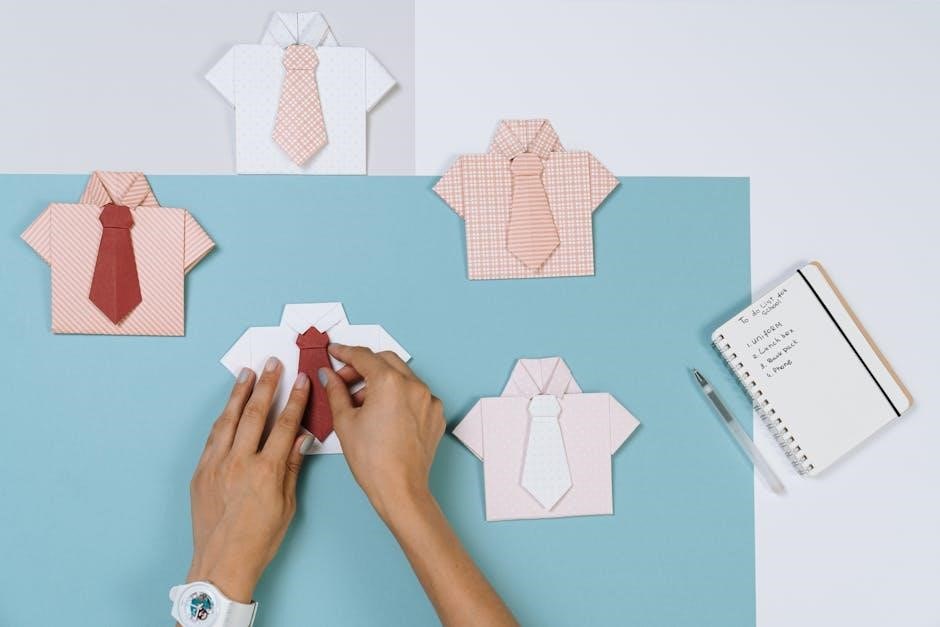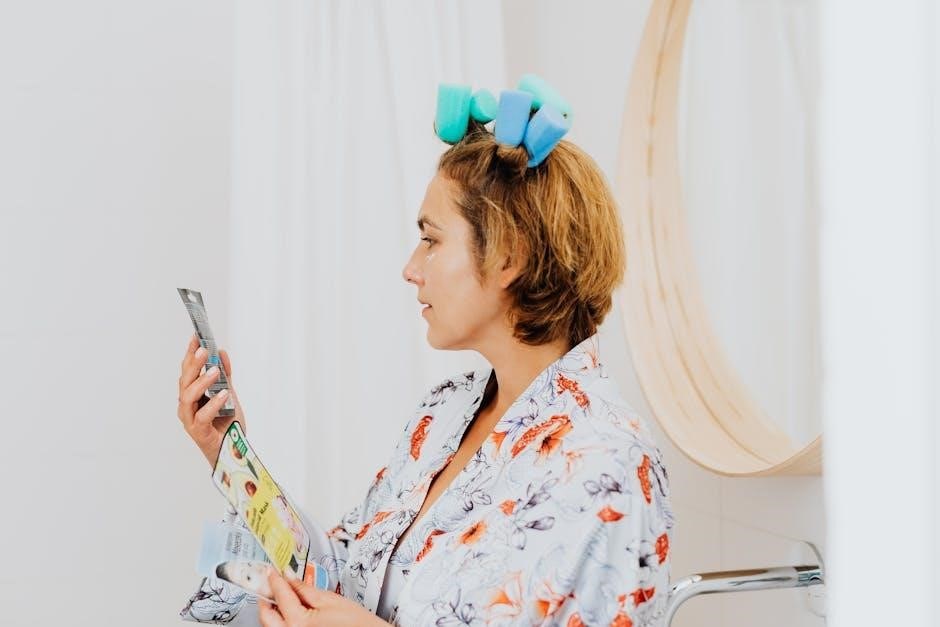DonJoy UltraSling III Instructions: A Comprehensive Guide
Welcome! This comprehensive guide provides clear and concise instructions for the proper application and care of your DonJoy UltraSling III. Correct application ensures optimal support and facilitates recovery from rotator cuff repairs, dislocations, or soft tissue injuries. Follow these steps closely for effective use.
The DonJoy UltraSling III is a premium shoulder immobilizer designed to provide exceptional support and comfort following surgical procedures or injuries. This sling is frequently prescribed for rotator cuff repairs, Bankart procedures, capsular shifts, glenohumeral dislocations/subluxations, and soft tissue repairs. Its advanced design ensures proper positioning and limits unwanted movement, promoting optimal healing.
The UltraSling III features a breathable, moisture-wicking fabric for extended comfort, especially during long-term use. It includes a user-friendly application system with quick-release buckles for easy adjustments. This guide offers step-by-step instructions to ensure correct application, maximizing its therapeutic benefits. Whether you’re a patient, caregiver, or medical professional, this resource will help you understand the features and proper use of the DonJoy UltraSling III, facilitating a smoother recovery process. The de-rotation strap, available separately, can prevent internal rotation, securely holding the arm in a neutral position.
Intended Use and Indications
The DonJoy UltraSling III is specifically designed to immobilize the shoulder, supporting healing after various surgical procedures and injuries. Its primary intended use is to provide secure and comfortable immobilization following rotator cuff repairs, ensuring the repaired tendons are protected during the initial healing phase. It is also indicated for post-operative Bankart procedures, which address shoulder instability by repairing torn ligaments.
Furthermore, the UltraSling III supports capsular shifts, procedures that tighten the shoulder capsule to correct instability. It is beneficial in cases of glenohumeral dislocations and subluxations, preventing further displacement of the shoulder joint. The sling is also suitable for managing soft tissue strains and repairs, offering stability and reducing stress on the injured tissues. By limiting shoulder movement, the UltraSling III promotes optimal healing and reduces the risk of re-injury, facilitating a smoother and more effective recovery process under the guidance of a healthcare professional.
Contraindications
While the DonJoy UltraSling III is a versatile and effective support device for various shoulder conditions, it is essential to understand its contraindications. A contraindication is a specific situation in which the sling should not be used, as it could potentially be harmful to the patient. Currently, there are no known absolute contraindications specifically listed by the manufacturer for the UltraSling III itself.
However, common sense and medical judgment should always prevail. The UltraSling III should not be applied if it interferes with the healing process or exacerbates the underlying condition. Open wounds or skin infections in the area where the sling makes contact are relative contraindications. In such cases, proper wound care and infection control measures must be implemented before considering the sling. Additionally, patients with known allergies or sensitivities to the materials used in the sling’s construction should avoid its use, or use it with appropriate precautions, to prevent allergic reactions or skin irritation.
Warnings and Precautions
Before using the DonJoy UltraSling III, it’s crucial to understand the necessary warnings and precautions to ensure safe and effective use. If you experience any pain, swelling, sensation changes, or unusual reactions while using this product, consult your medical professional immediately. Never wear the support over an open wound without proper wound care and a sterile dressing. Ensure the sling is appropriately sized and fitted to prevent nerve compression or circulatory issues.
Patients with pre-existing conditions like peripheral neuropathy or vascular disease should use the sling with caution and under close medical supervision. Regularly inspect the sling for any signs of wear and tear, such as frayed straps or damaged buckles, and replace it if necessary. Avoid overtightening the straps, as this can restrict blood flow and cause discomfort. This device is intended for single-patient use only to prevent cross-contamination.

Applying the UltraSling III
This section details the proper steps for applying the DonJoy UltraSling III. Follow each step carefully to ensure correct positioning, optimal support, and comfort during your recovery period. Correct application is vital for proper functioning.
Step 1: Preparing the Sling
Before applying the UltraSling III, preparing it correctly is crucial for optimal fit and effectiveness. Begin by detaching the shoulder strap buckles from the sling. This allows for easier positioning around your arm and shoulder. Next, fully open the front panel of the sling. This provides ample space to comfortably position your elbow inside.
Ensure all Velcro straps are free and clear of any obstructions. Check that the sling’s interior is smooth and free of any folds or creases that could cause discomfort or irritation against your skin. Lay the sling out on a clean, flat surface to inspect it thoroughly.
Familiarize yourself with the location of all straps and buckles. Understanding how they connect will streamline the application process. If a thumb strap is included, locate it and determine how it attaches to the front of the sling. This preparation ensures a smooth and efficient application process, maximizing comfort and support.
Step 2: Positioning the Arm
Proper arm positioning within the UltraSling III is essential for achieving the desired immobilization and support. Gently place your elbow into the sling, ensuring it sits as far back as comfortably possible. The goal is to maintain a 90-degree angle of flexion at the elbow joint. This position promotes proper healing and reduces strain on the shoulder.
Verify that the sling fully supports your forearm, distributing weight evenly to prevent pressure points. If using the abduction model, ensure the pillow rests comfortably against the side of your body, not pressing on your stomach. Fine-tune the position of your arm within the sling until you feel secure and supported.
Adjust the sling as needed to achieve optimal comfort without compromising the required immobilization. If any discomfort persists, consult with your medical professional for guidance. Maintain this correct positioning throughout the day and night, unless otherwise instructed by your doctor, to ensure proper healing and support.
Step 3: Securing the Shoulder Strap
With your arm correctly positioned within the sling, the next step is to secure the shoulder strap. Take the shoulder strap and carefully position it over the shoulder opposite the injured arm. Ensure the strap sits comfortably without digging into your neck. Reach across your body and connect the shoulder strap to the sling using the provided quick-release buckles.
Adjust the strap length to achieve a snug yet comfortable fit. The sling should hold your arm securely without causing undue pressure or discomfort. A properly adjusted strap will prevent the sling from shifting excessively during movement.
For rehabilitation exercises, the outside quick-release buckle can be detached to increase range of motion, as advised by your therapist. Remember to re-secure the buckle after completing the exercises. Periodically check the strap’s position throughout the day and readjust as needed to maintain optimal support and comfort. If experiencing any pain, consult your physician.
Step 4: Attaching the Waist Pillow
This step is applicable if your UltraSling III includes a waist pillow, designed to provide additional support and maintain abduction. Position the pillow along the waistline on the side of your body where the injured arm is located. Ensure the pillow sits comfortably against your torso without causing pressure on your stomach.
Next, attach the sling to the exterior of the waist pillow, carefully aligning the Velcro strips for a secure bond. Fasten the waist strap around both the pillow and your waist, adjusting the strap to achieve a snug and comfortable fit. The pillow should feel stable and well-supported against your body.
Adjust the position of your arm for the desired internal or external rotation by gently sliding the pillow forward or backward along your waistline. Ensure the shoulder remains in the position prescribed by your doctor. The pillow helps maintain this position, reducing strain. If discomfort arises, consult your physician.

UltraSling III AB (Abduction Model) Application
This section details application instructions specific to the UltraSling III AB model, which includes an abduction pillow. Correct positioning and securing of the pillow are vital for optimal support and immobilization following specific shoulder procedures. Follow each step carefully.
Positioning the Abduction Pillow
Proper positioning of the abduction pillow is crucial for maintaining the prescribed angle and ensuring effective immobilization. Begin by placing the large pillow under the affected arm, ensuring the angled side (usually 45 degrees, but confirm with your physician) is facing upward. The pillow should support the entire forearm and elbow, preventing strain or discomfort.
Ensure that the pillow is positioned comfortably along the waistline of the affected side. It shouldn’t be too far forward or backward, as this can compromise the intended abduction angle. The goal is to maintain a neutral and supported position, promoting optimal healing and reducing the risk of complications.
Note that some abduction pillows can be inverted to create a 60-degree abduction angle. Always consult with your healthcare provider to determine the appropriate angle for your specific condition and follow their instructions precisely. Correct pillow placement is paramount for achieving the desired therapeutic outcome.
If you experience any pain, discomfort, or unusual sensations, readjust the pillow slightly or contact your medical professional for further guidance. Your comfort and proper alignment are key to a successful recovery.
Securing the Sling to the Pillow
Once the abduction pillow is correctly positioned, the next step is to securely attach the sling to the pillow. Align the sling with the outer surface of the pillow, carefully matching the hook and loop (Velcro) strips on both components. Ensure a snug and even contact between the sling and the pillow to prevent slippage or movement.
Press firmly along the entire length of the Velcro strips to create a strong bond. Double-check that all areas are securely fastened, especially around the elbow and wrist, to provide consistent support. A loose or improperly attached sling can compromise the intended immobilization and potentially hinder the healing process.
Next, wrap the waist strap around your waistline and the pillow, then buckle it securely. Adjust the strap to achieve a comfortable and snug fit, ensuring the pillow remains firmly in place against your body. Avoid over-tightening the strap, as this can restrict circulation or cause discomfort. The goal is to provide stability without excessive pressure.
Regularly inspect the Velcro connections and waist strap to ensure they remain securely fastened throughout the day. If any loosening occurs, reattach and readjust as needed. Proper sling-to-pillow attachment is essential for maintaining the prescribed abduction angle and maximizing the therapeutic benefits of the UltraSling III AB.
Adjusting Abduction Angle
The DonJoy UltraSling III AB allows for customization of the abduction angle, typically set at 45 or 60 degrees, to suit individual patient needs and prescribed treatment protocols. To adjust the angle, first ensure the sling is properly secured to the abduction pillow as described previously. The standard configuration positions the pillow with the 45-degree angle facing upwards.
For a 60-degree abduction angle, the pillow can be inverted. Detach the sling from the pillow and carefully flip the pillow upside down. Reattach the sling to the pillow, aligning the Velcro strips as before. Ensure the waist strap remains securely fastened after the adjustment.
Consult with your healthcare provider to determine the appropriate abduction angle for your specific condition. Maintaining the prescribed angle is crucial for promoting optimal healing and preventing complications. Avoid making adjustments without professional guidance, as incorrect positioning can impede recovery.
Periodically check the abduction angle throughout the day to ensure it remains consistent. The pillow may shift slightly with movement, requiring minor readjustments. Consistent adherence to the recommended angle will contribute to a more effective and comfortable recovery process. Remember to prioritize comfort while maintaining the clinically advised position.

Care and Maintenance
Proper care ensures the longevity and effectiveness of your UltraSling III. Regular cleaning and occasional adjustments will maintain its support and comfort. Follow these guidelines to keep your sling in optimal condition throughout your recovery.
Cleaning Instructions
Maintaining the cleanliness of your DonJoy UltraSling III is crucial for hygiene and preventing skin irritation. Proper cleaning prolongs the life of the sling and ensures comfort during use. Follow these simple steps to clean your UltraSling III effectively.
Hand Washing: Gently hand wash the sling in cold water using a mild soap. Avoid harsh detergents or bleach, as these can damage the material and reduce its effectiveness. Ensure the soap is thoroughly dissolved in the water before immersing the sling.
Rinsing: Rinse the sling thoroughly under cold, running water until all traces of soap are removed. Residual soap can cause skin irritation and deteriorate the fabric over time. Pay special attention to rinsing the areas that come into direct contact with the skin.
Drying: After rinsing, gently squeeze out excess water. Do not wring or twist the sling, as this can damage its structure. Air dry the sling completely, away from direct sunlight or heat sources. Using a dryer is not recommended, as it can shrink or warp the material.
Important Note: Always ensure the sling is completely dry before reuse to prevent the growth of bacteria or mold. Regularly inspect the sling for any signs of wear or damage, and replace it if necessary.
Trimming the Straps
For a customized and comfortable fit, the DonJoy UltraSling III features adjustable straps. In some cases, you may find it necessary to trim the straps to achieve the perfect length and prevent excess material from getting in the way. This adjustment ensures the sling fits snugly and provides optimal support.
Identifying Excess Length: Before trimming, wear the sling and adjust the straps to their desired tightness. Identify any excess length that extends beyond the adjustment points. Ensure the sling is properly positioned and providing the necessary support before making any cuts.

Marking the Cut Point: Use a marker or pen to clearly mark the point where you intend to trim the strap. Leave a small amount of extra length to allow for slight adjustments if needed. Accurate marking ensures a clean and precise cut.

Cutting the Straps: Using sharp scissors, carefully cut the straps at the marked point. Ensure the cut is clean and even to prevent fraying. You can also use a hot knife or lighter to seal the edges and prevent unraveling.
Reattaching the Y-Tab (if applicable): If your UltraSling III has a Y-tab, reattach it to the trimmed end of the strap. This provides a secure and professional finish. Ensure the Y-tab is firmly attached to prevent it from coming loose during use.

Warranty Information
DJO, LLC, the manufacturer of the DonJoy UltraSling III, provides a limited warranty covering defects in materials and workmanship. This warranty offers assurance against manufacturing errors or flaws that may affect the sling’s functionality during normal use. Understanding the terms and conditions of this warranty is essential for addressing any potential issues.
Warranty Period: The DonJoy UltraSling III warranty is valid for a period of six months from the original date of purchase. This period allows sufficient time to identify and report any manufacturing defects that may arise during regular use of the sling.
Coverage: This warranty covers the repair or replacement of the unit or its accessories if defects in materials or workmanship are found. The warranty applies only to the original purchaser and is non-transferable.
Exclusions: The warranty does not cover damage caused by misuse, abuse, alteration, or improper care. Normal wear and tear, including fraying or discoloration of materials, is also excluded. Additionally, the warranty does not cover damage resulting from accidents or acts of nature.
Claim Procedure: To initiate a warranty claim, contact DJO, LLC, or an authorized distributor with proof of purchase. Follow their instructions for returning the defective product for inspection. If the claim is approved, DJO, LLC, will repair or replace the product at their discretion.

Important Considerations
The UltraSling III is designed for single-patient use to prevent cross-contamination. This device is available only with a prescription from a healthcare professional. Always follow your doctor’s specific instructions for proper use and care.
Single Patient Use

The DonJoy UltraSling III is intended for use by a single patient only. This is a critical safety measure to prevent the potential transmission of infections between individuals. Medical devices that come into contact with the body, even non-invasive devices like the UltraSling III, can harbor bacteria or other microorganisms.
Reusing the sling on multiple patients could lead to cross-contamination, potentially causing infections or other complications. The materials and construction of the sling are not designed to withstand repeated cleaning and sterilization processes that would be necessary for safe reuse.
Therefore, adhering to the single-patient use policy is essential for maintaining hygiene and ensuring the safety of all patients. Do not share your UltraSling III with anyone else, even if they have a similar injury or condition. Dispose of the sling properly after you have completed your course of treatment as directed by your healthcare provider.
This measure helps protect both you and others from potential health risks associated with the reuse of medical devices.
Prescription Requirement
The DonJoy UltraSling III is classified as a prescription medical device. This designation signifies that it requires a valid prescription from a licensed healthcare professional, such as a physician, orthopedic surgeon, or physical therapist, to be legally dispensed to a patient. The prescription requirement is in place to ensure that the sling is used appropriately and safely, under the guidance of a qualified medical expert.

A healthcare professional will assess your specific condition and determine if the UltraSling III is the right choice for your needs. They will also provide instructions on how to use the sling correctly, including the appropriate duration of use and any necessary adjustments. Attempting to use the UltraSling III without a prescription could lead to improper application, delayed healing, or even further injury.
Therefore, it is crucial to consult with your doctor or other healthcare provider to obtain a prescription before acquiring and using the DonJoy UltraSling III. This will ensure that you receive the proper care and guidance for your recovery process.